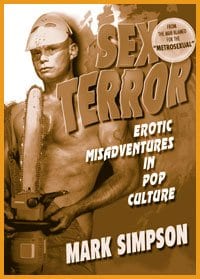Back in 2002, when British writer Mark Simpson first popularized the term metrosexual, the potential seemed infinite. Gay, straight, bisexual – whatever. All men could be well-groomed.
At stake was the very definition of masculinity, not to mention the traditionally gay pastimes of obsessive grooming and shopping. The metrosexual would be the frontline soldier of this revolution: a straight or bisexual figure toting Prada loafers, faded Paper Denim jeans, a slim-fitting Ben Sherman button-up and a dime-sized dab of styling wax affixing his impeccably coifed do.
But ask the fashionistas selling body-conscious clothing: maybe the metrosexual revolution was more myth than reality.
“You know what that whole metrosexual thing is? It’s a story,” says Jim Smith, owner and designer of the spiffy men’s wear boutique Envelop. “It’s a story to write about, but it’s not really true. I don’t think so.”
Smith should know. After dev-eloping a successful business during Envelop’s four-year run on Church St, he decided it was time to target a straighter clientele. Last year he closed the Church St store and headed for Yorkville, opening an outlet on Bellair.
“We did try to accommodate a straight market,” says Smith, “And frankly after being in Yorkville for a year, we’re going back to focussing on gay guys.”
Smith says the biggest problem is that straight men just aren’t programmed to shop for clothes.
“In terms of fashion, and just interest in clothing, there are gay guys and there are women,” says Smith. “In Canada and in Toronto, straight guys just aren’t going to be comfortable being interested in fashion. We learned that going into Yorkville, and that’s why we’re pulling out of Yorkville.”
The metrosexual revolution has seen other casualties. Stephen Sandler’s tightly fitted underwear and athletic garb empire, Body Body Wear, opened new stores outside Toronto’s gay ghetto: one on Yonge St and one on Queen St W. Both stores lasted less than a year. Now the Church St store has an uncertain future: there’s a For Rent sign in the window. Were fickle metrosexuals to blame for the downsizing? Sandler didn’t return Xtra’s telephone calls by press time.
The revolution has been kinder to Ed Velasquez. He’s the owner and designer of Joave, a Church St retailer specializing in versatile sports-casual wear. Velasquez says that while 80 percent of his clientele are gay men, 20 percent are metrosexuals who aren’t afraid to step into the gay village to find a great shirt.
“I do have quite a few metrosexuals that shop in my store,” says Velasquez. “Because they take care of themselves, they want to look good. They don’t want to look like everyone else.”
Perhaps the whole metrosexual thing is more of a subtle shift than an outright revolution. As gay lifestyles become further integrated into mainstream culture trends, there’s increased opportunity for spill-over between gay and straight men.
“I think nowadays, a lot of straight men are feeling comfortable having gay friends,” says Chris Stephen, a sales associate in the fashion department of Queen St W’s trendy Caban. “That’s an influence on the way they look, the way they feel and the way they act.
“And also, [straight] men are realizing that their gay counterparts – how they react, how they talk to women – are a kind of an ideal of what women are looking for. Women are looking for somebody to talk to, they are looking for someone who actually has an interest in clothing and shopping and fashion.”
Maybe they’re just shy about clothing that shows off their nipples.

 Why you can trust Xtra
Why you can trust Xtra


